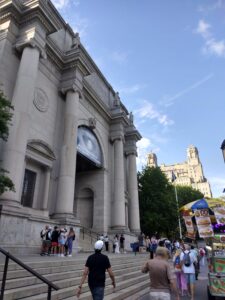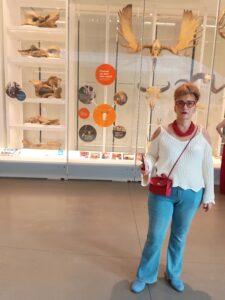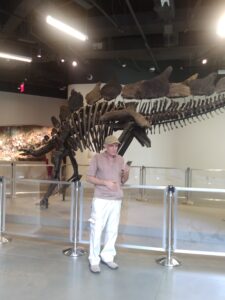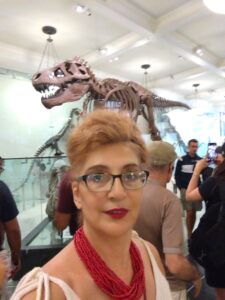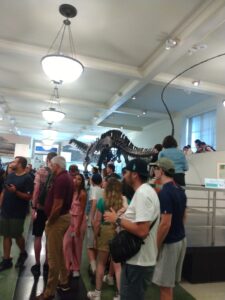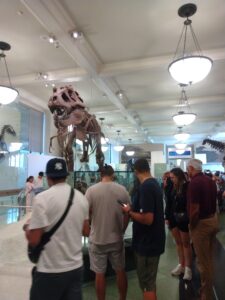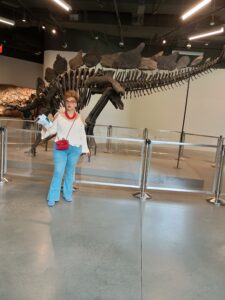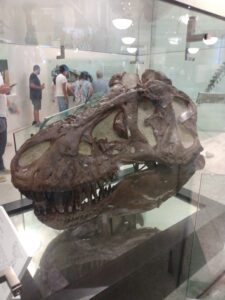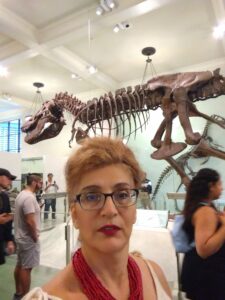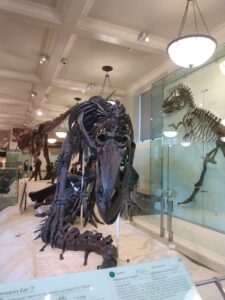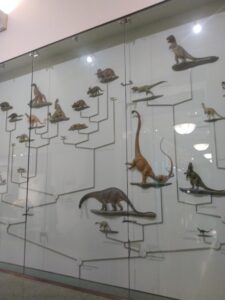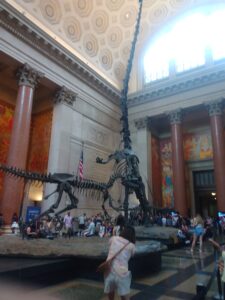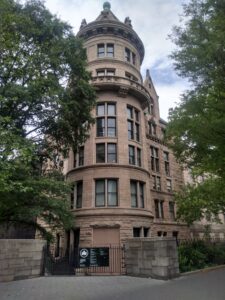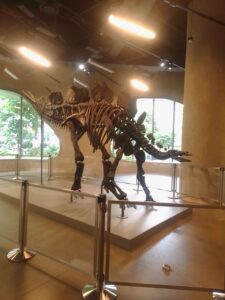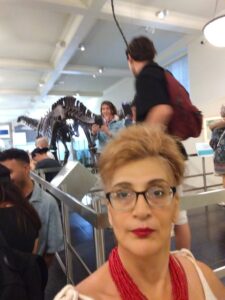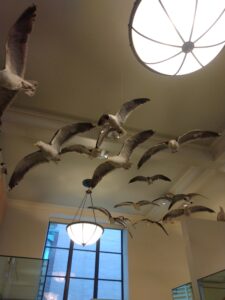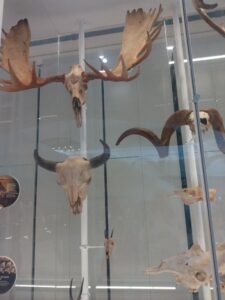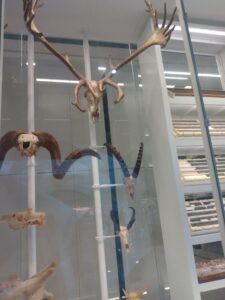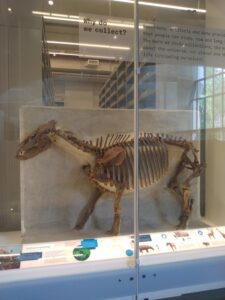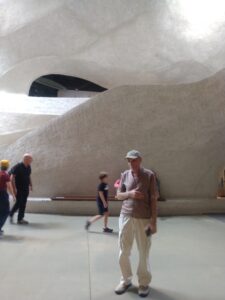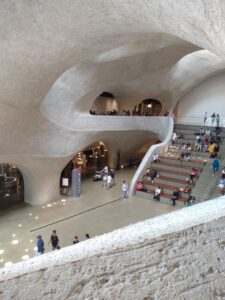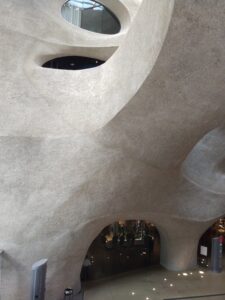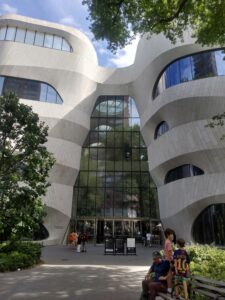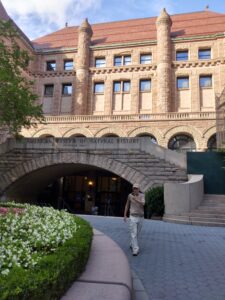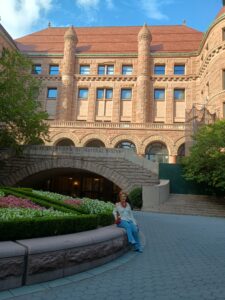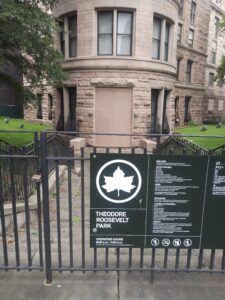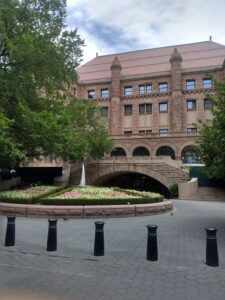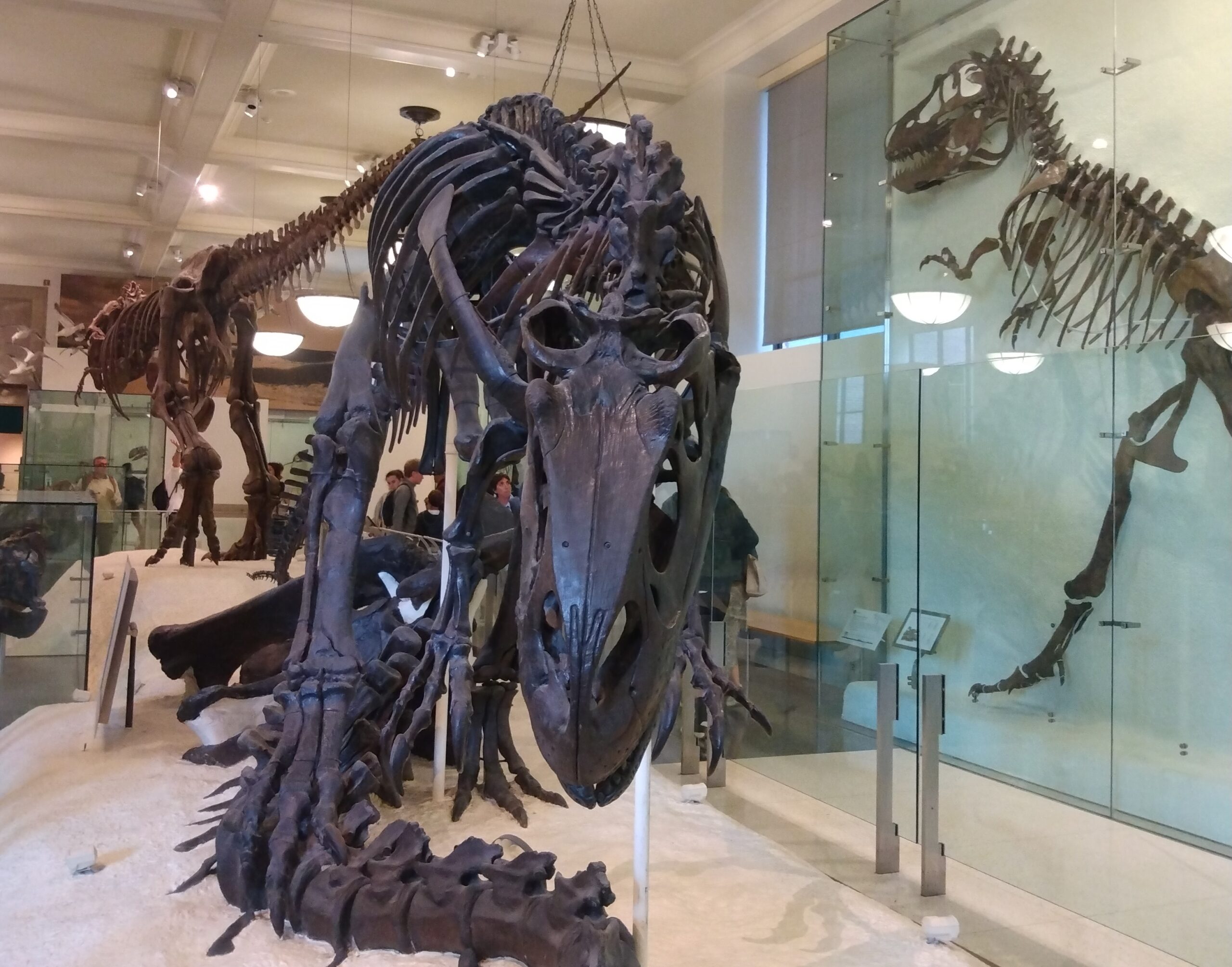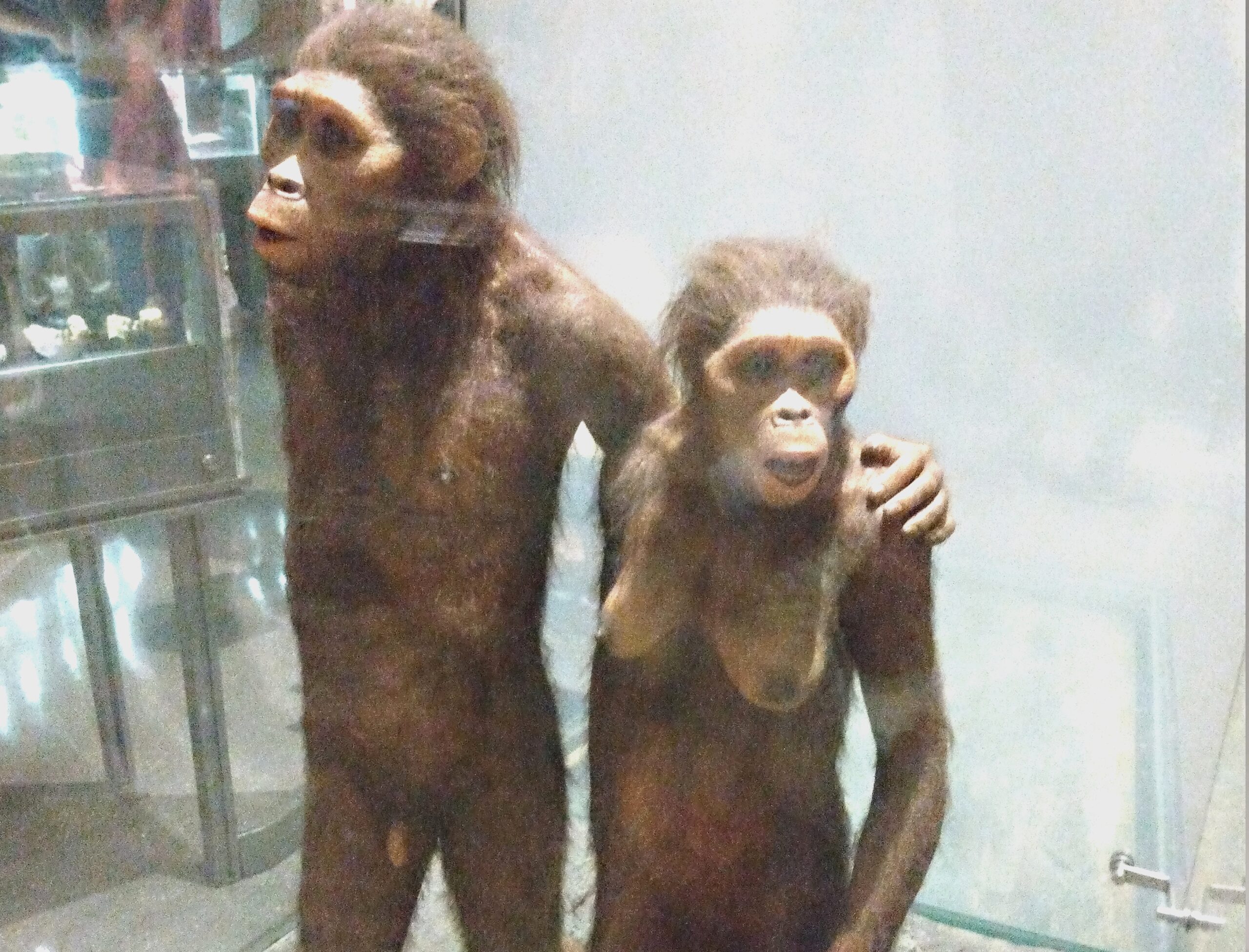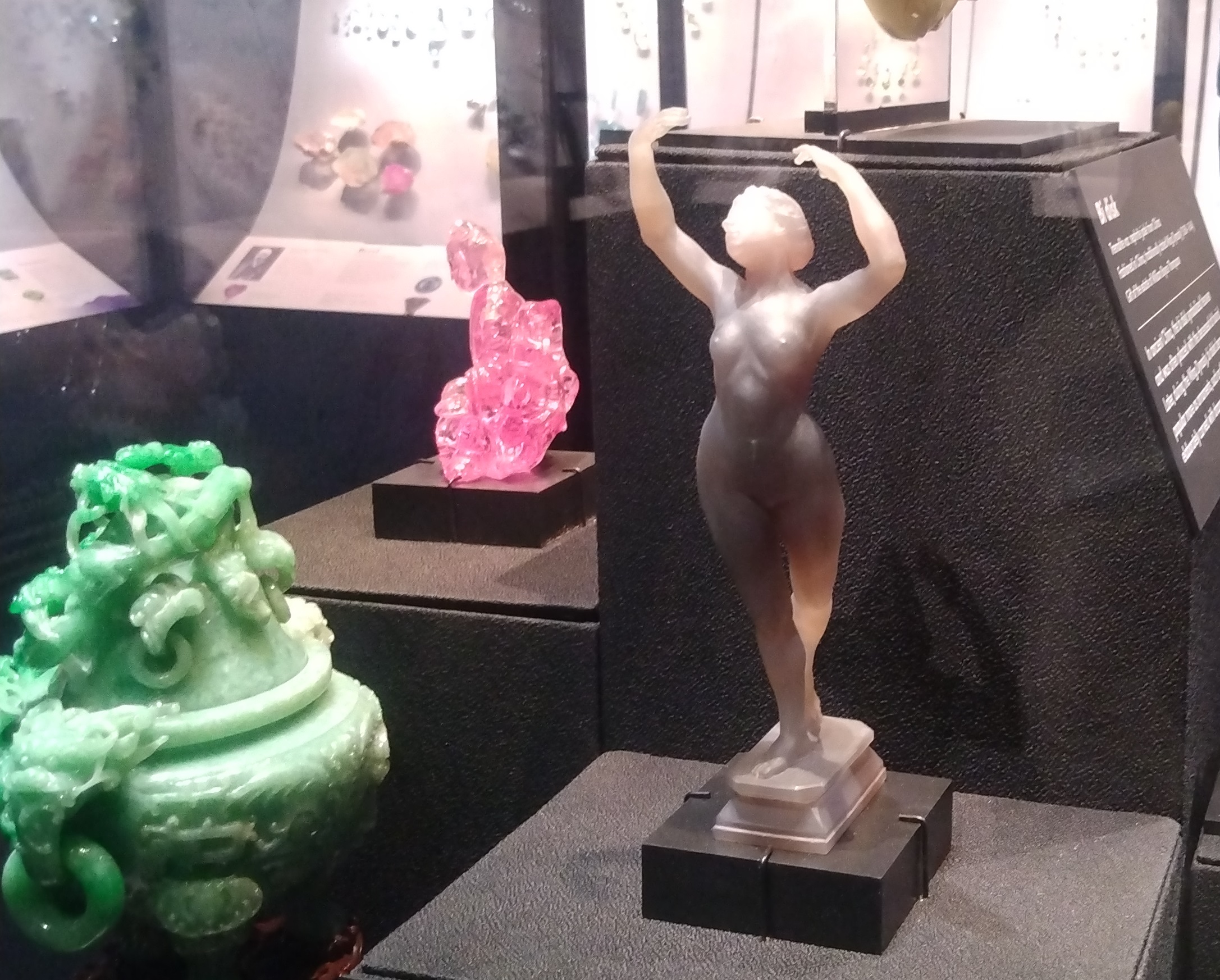Founded in 1869, the American Museum of Natural History (AMNH) is a globally renowned institution located on Manhattan’s Upper West Side, bordering Central Park. The complex comprises 21 interconnected buildings housing 45 permanent exhibition halls, along with a planetarium and research library. Together, the museum’s collections encompass 32 million specimens—from fossils and meteorites to cultural artifacts and astrophysical data—though only a fraction are on display at any time. The American Museum of Natural History (AMNH) uses a combination of exhibits, films, and cutting-edge technology to make complex topics easy to understand. Through interactive displays and engaging storytelling, visitors gain insight into everything from ancient fossils to the latest discoveries in space exploration. This blend of education and innovation ensures that learning at the museum is both accessible and exciting for people of all ages.
Stegosaurus Apex Arrival: A near-complete, 150-million-year-old Stegosaurus skeleton named Apex is on display starting December 2025. One of the most complete ever discovered, this 27‑foot-long fossil is on loan for a limited time before being replaced by a cast.
| Fossils & Dinosaurs | Titanosaur cast (122 ft long), T. rex, other fossil specimens in orientation and dinosaur halls. |
| Ocean Life | The iconic 94-foot blue whale model, immersive marine dioramas, and ecology-rich displays. |
| Gems & Minerals | Allison & Roberto Mignone Halls feature thousands of rare gems, including the “Star of India” sapphire. |
| Biodiversity & Ecology | Walk-through rainforest dioramas and “Spectrum of Life” video installations illustrating Earth’s ecosystems. |
| Planet Earth & Space | Hayden Planetarium within the Rose Center for Earth and Space, featuring immersive cosmic exhibits like the “Scales of the Universe” path and Big Bang Theater. |
| Human Origins & Cultures | Learn about human evolution—see fossils like Lucy—and explore cultural anthropology from Asia to the Pacific. |
| Insectarium & Innovation | The new Richard Gilder Center (opened in 2023) includes a live butterfly vivarium, interactive “Invisible Worlds” displays, and visible specimen storage. |
| Meteorites & Minerals | Home to awe-inspiring space artifacts like the 34-ton Cape York Meteorite (Ahnighito). |
